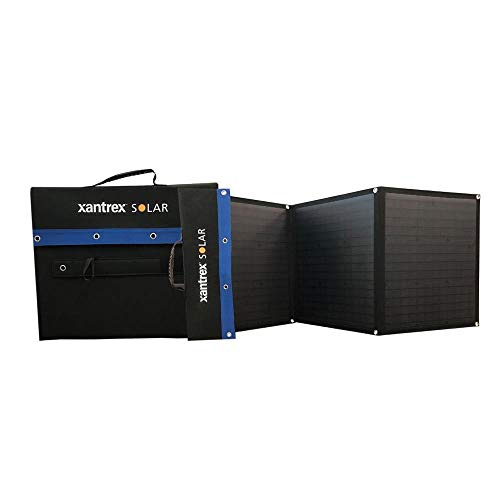stevea
Member
- Joined
- Feb 12, 2019
- Messages
- 23
- Reaction score
- 0
Please tell me if this sounds like a reasonable solar setup.
1. Renogy 200 watt portable suitcase system with included charge controller
2. 2x Renogy 12v 100 amp hour agm batteries
3. Renogy pure sine wave inverter 1000w
I will be running a Whynter 65qt fridge (24/7), plus various devices as needed like a small fan, laptop and cell phone w/chargers, Ryobi battery chargers occasionally for a power drill, LED lights, radio, maybe someday a small microwave.
I have a Honda 1000 watt generator for emergency power. I'd like to run it as little as possible either to recharge the batteries if I hit a rainy spell or to run a few corded power tools.
I am going portable so:
1. I can keep my panels in the sun and the camper in the shade.
2. I don't have to hard wire the system inside and mount the panels on my small roof. That way if I upgrade or downgrade my camper I can take this system with me.
3. I have never done this before so buying the suitcase kit might save me some problems (?)
4. I can put the fridge in my truck when traveling long distances and run it off the cigarette adapter.
Questions:
Is this a good setup?
Would connecting the Whynter fridge via the 110 adapter to the inverter work better than getting an inverter with a cigarette adapter or will the adapter cause power loss that will make the fridge not work? Many threads say to cut off the 9v male end and hard wire the fridge to tell battery but I am thinking of waiting until I'm on the road and then can pay someone experienced to do this for me.
Is it ok to plug a multiprong 110 adapter into the inverter so I can plus in several devices to one port (lower wattage items like fan, laptop, lights)?
Can I connect a second inverter or cable to provide a 9v female port for 9v devices?
Do I need to add fuses anywhere? I'm assuming the Renogy suitcase covers the panel to charge controller to battery side and the Renogy inverter covers the battery to appliance side.
Any advice if appreciated. Thank you.
1. Renogy 200 watt portable suitcase system with included charge controller
2. 2x Renogy 12v 100 amp hour agm batteries
3. Renogy pure sine wave inverter 1000w
I will be running a Whynter 65qt fridge (24/7), plus various devices as needed like a small fan, laptop and cell phone w/chargers, Ryobi battery chargers occasionally for a power drill, LED lights, radio, maybe someday a small microwave.
I have a Honda 1000 watt generator for emergency power. I'd like to run it as little as possible either to recharge the batteries if I hit a rainy spell or to run a few corded power tools.
I am going portable so:
1. I can keep my panels in the sun and the camper in the shade.
2. I don't have to hard wire the system inside and mount the panels on my small roof. That way if I upgrade or downgrade my camper I can take this system with me.
3. I have never done this before so buying the suitcase kit might save me some problems (?)
4. I can put the fridge in my truck when traveling long distances and run it off the cigarette adapter.
Questions:
Is this a good setup?
Would connecting the Whynter fridge via the 110 adapter to the inverter work better than getting an inverter with a cigarette adapter or will the adapter cause power loss that will make the fridge not work? Many threads say to cut off the 9v male end and hard wire the fridge to tell battery but I am thinking of waiting until I'm on the road and then can pay someone experienced to do this for me.
Is it ok to plug a multiprong 110 adapter into the inverter so I can plus in several devices to one port (lower wattage items like fan, laptop, lights)?
Can I connect a second inverter or cable to provide a 9v female port for 9v devices?
Do I need to add fuses anywhere? I'm assuming the Renogy suitcase covers the panel to charge controller to battery side and the Renogy inverter covers the battery to appliance side.
Any advice if appreciated. Thank you.


































































